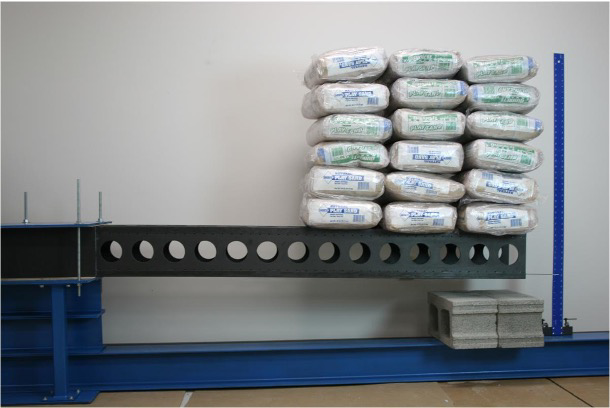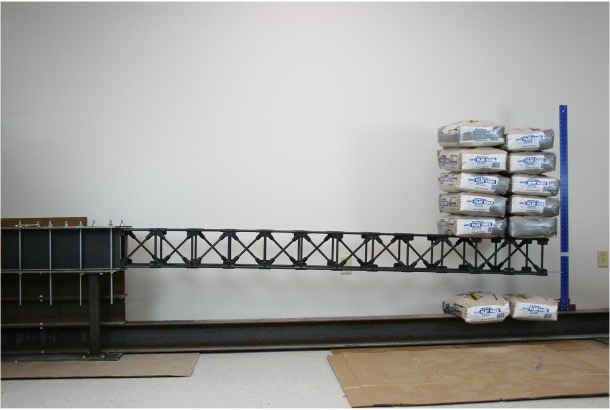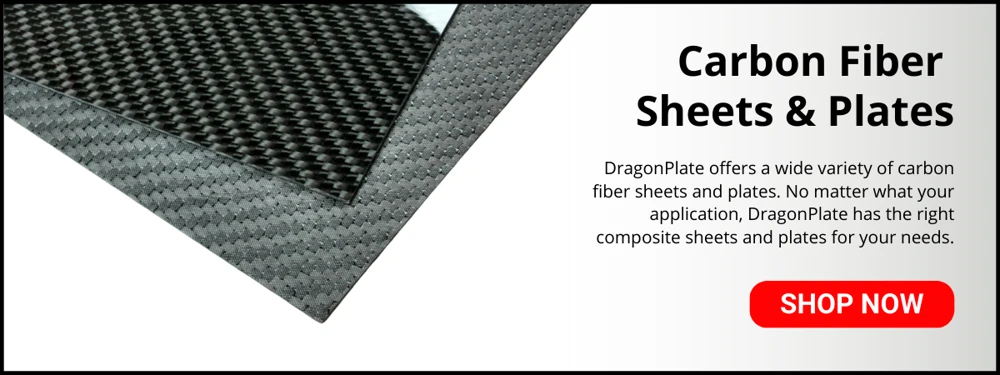Just How Strong is Carbon Fiber?
The most valuable characteristics of carbon fiber are its strength, stiffness, and lightweight. Carbon fiber is made of very fine, crystalline filaments of carbon in “tows”, which contain thousands of individual filaments. These yarn-like strands are woven together into cloth of various weaves. When layers of carbon fiber cloth are bonded together, into a carbon fiber plate or sheet, the carbon fiber laminate is exceedingly strong. So how strong is it?

The Strength of Carbon Fiber
Carbon fiber is twice as stiff and five times stronger than steel. While stronger and stiffer than stainless steel, carbon fiber is lighter, which makes it an ideal manufacturing material.
Classifying Carbon Fiber Stiffness and Strength
Tensile modulus is defined as “the ratio of stress (force per unit area) along an axis to strain (ratio of deformation over initial length) along that axis.” Also known as stiffness, tensile modulus can predict the elongation or compression of material as long as the stress is lower than the tensile strength of the material.
Carbon fibers are classified based on the tensile modulus of the fibers. The English unit of measure is pounds of force per square inch of cross-sectional area, abbreviated as psi (or ksi for thousand psi and MSI for million psi) . There are five carbon fiber classifications: low modulus, standard modulus, intermediate modulus, high modulus, and ultrahigh modulus.
| Carbon Fiber Class | Low Modulus | Standard Modulus | Intermediate Modulus | High Modulus | Ultrahigh Modulus |
| Tensile Modulus GPa | <227 | 227 | 289 | 393 | 758 |
| Tensile Modulus MSI | <33 | 33 | 42 | 57 | 110 |
The stiffness and strength of a laminated carbon fiber epoxy sheet or plate are determined by:
- The carbon fiber material properties
- The layup schedule of the fibers (fiber orientation, weave type and thickness of laminate plies)
- The fiber/resin ratio
A good estimate for tensile modulus for a balanced, symmetrical, 0/90deg layup schedule would be 10 MSi (70 GPA). A good estimate for tensile strength for the same layup would be 87 KSI (600 MPA).
By comparison, steel has a tensile modulus of around 29 MSI (200 GPa) and a tensile strength of 61 KSI (420 MPA ). The tensile modulus of aluminum is about 10 MSI (69 GPa) and tensile strength is 40 KSI (276 MPA)
As can be seen from the table below carbon fiber laminate has the highest specific Tensile Strength and the highest Specific Stiffness
| Material | Tensile Modulus GPa | Tensile Strength MPa | Density g/cm3 | Specific Tensile Strength Pa m3/kg | Specific Tensile Modulus MPa m3/kg |
| Aluminum | 69 | 276 | 2.7 | 102 | 25.5 |
| Steel | 200 | 420 | 7.9 | 53 | 25.3 |
| Carbon Fiber Laminate | 70 | 600 | 1.5 | 400 | 46.7 |
Ultra high modulus carbon fibers are approximately 3 times stiffer than standard modulus but are not as strong. In addition, carbon fiber has superior fatigue resistance properties when compared to both steel and aluminum. Also, when combined with appropriate resins, carbon fibers are among the most corrosion-resistant materials on the market.

How Does Carbon Fiber Compare to Other Materials?
Fiberglass and Kevlar® laminates have densities close to that of carbon fiber. However, carbon fiber is stronger and much stiffer than either fiberglass or Kevlar®
| Material | Modulus of Elasticity GPa | Tensile Strength MPa | Density g/cm3 | Specific Tensile Strength Pa m3/kg | Specific Tensile Modulus MPa m3/kg |
| Fiberglass | 25 | 440 | 1.9 | 231 | 13.2 |
| Kevlar® (Aramid) | 30 | 480 | 1.4 | 333 | 20.8 |
| Carbon Fiber | 70 | 600 | 1.5 | 400 | 46.7 |
Comparing the characteristics of carbon fiber to other materials is not always straightforward. There are multiple ways to measure strength, and this can make it difficult to make objective comparisons. However, when looking strictly at specific tensile modulus and specific tensile strength the choice is obvious.
Strength isn’t a top priority for every project. Often other factors like flexibility or manufacturing requirements must be considered when selecting materials for a project. When strength and stiffness and molecular weight are paramount, carbon fiber is typically the best choice.
FAQs About Carbon Fiber Strength
Does Carbon Fiber Break Easily?
Carbon fiber delivers a high strength-to-weight ratio and high resistance to fatigue. However, it does not have elastic properties like most metals. Carbon fiber can be brittle and susceptible to localized failures at stress concentrations under high forces. Proper design and engineering are crucial for optimal performance and durability.
Can You Burn Carbon Fiber?
Yes, carbon fiber is composed of carbon atoms and will combust in the presence of oxygen and sufficient heat. The resin used in composites will also contribute to combustion. A carbon fiber's burn characteristics will vary with the specific type of carbon fiber, the resin matrix, and the manufacturing process. For instance, composites used in aircraft are typically manufactured with flame-retardant epoxy resins to reduce their susceptibility to flame.
Can Carbon Fiber Rust?
Carbon fiber is a non-metallic material composed mainly of carbon atoms and thus does not contain any elements that can rust. As a result, carbon fiber is highly resistant to corrosion, making it an excellent choice for applications where exposure to moisture or corrosive environments is a concern.
How Strong Is Carbon Fiber Filament?
Carbon fiber filaments have an incredibly high tensile strength, which measures how much force they can withstand before breaking under tension. High-quality carbon fiber filaments can have tensile strengths ranging from 3,500 megapascals (MPa) to over 7,000 MPa. That is much greater than typical steel, with a tensile strength of around 400-500 MPa.

